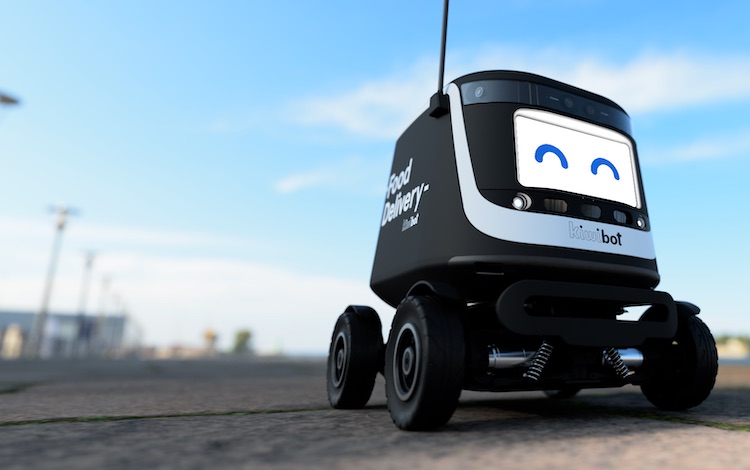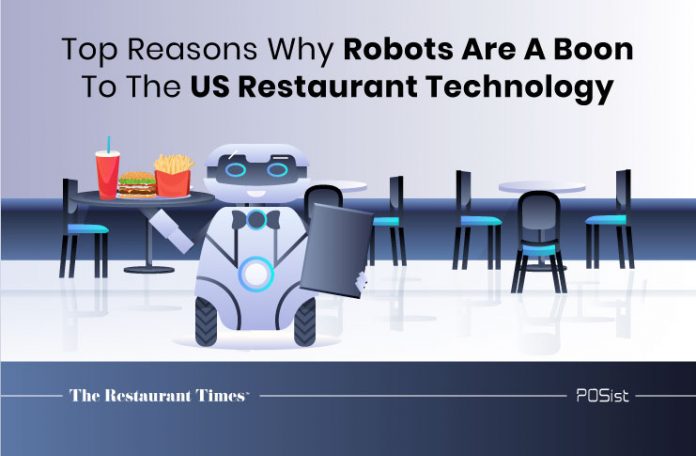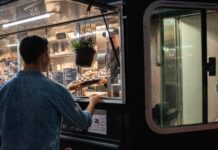Advanced technology is opening newer avenues for USA restaurateurs. Post-digitization, robots are emerging as the new frontiers of the US restaurant industry. From topping pizzas to waiter-ing and delivery, robots are now managing virtually every other aspect a restaurant might involve. In fact, with the increased affordability of restaurants, robots have now become a run-of-the-mill in the US.
One major factor that has sprung robots into action is the drop in US QSR industry revenues attributed to the pandemic. Prior to the pandemic, robots were not that buzzy amongst the restaurateurs. However, COVID-19 fast-forwarded the already existing tech-trend as the fast-food industry witnessed a nearly 20% decline in restaurant traffic. Therefore, reduced overall revenues, increased restaurant attrition rate, and the motive of boosting sales thrust the need for going-tech.
The presence of non-human staff eliminates worries of hiring, human errors, employee turnover, etc. These one-time investments have a significant impact on labor costs and productivity as well. Once deployed, restaurateurs need not worry about issues pertaining to paying the employees, inconsistent recipes, inaccuracy, food waste, and slow service, among other merits.
How Have Robots Transformed The US Restaurant Industry
After the augment of robotics in the restaurant industry, numerous establishments have introduced robots to their operations. Let us see to what extent the restaurateurs have explored robotic technology for their restaurants
1. Robotic Food Preparation And Cooking
Restaurants use robotic food preparation and cooking to minimize the error in recipes. Firstly, all the precision brought about by the robotic cooks elevates the dishes and upgrades the customer experience to a whole new level. Each piece of vegetable cut in equal parts, each ingredient used in consistent quantities, and mixed well ultimately gives a better and consistent taste to the recipes. Secondly, their utility is not limited to any culinary skills which enable the restaurateurs to experiment with any cuisine they want. Thirdly, they work faster than human staff and can dish out relatively more orders enabling the restaurant to serve more customers in one go.
Flippy, a burger-making robot at CaliBurger, California cooks burgers and places them on buns. The efficient utilization of machine learning and artificial intelligence enables the robot to learn from its experiences and improve with time. They are adaptable and can be trained to do other risky and arduous tasks in a restaurant kitchen that humans may want to skip. From chopping vegetables to frying chicken, they can be trained to do it all and of course more.
2. Robotic Delivery
With the increasing pressure on the QSR industry in the USA, especially post-pandemic, food delivery is a major aspect that restaurateurs are paying attention to. Since people are extremely apprehensive about getting their food delivered, delivery operations have now pivoted to being contactless with the utilization of robotic deliveries. The aim is to reduce the delivery time, physical contact, and streamline the delivery process.
Recently, Chick-fil-A, partnering with Kiwibot, a robotic sidewalk delivery startup, has commenced its delivery testing procedures with the launch of Kiwibot 4.0, in the Santa Monica area in California. It uses cameras, lights, speakers, and delivers food packages with an average delivery time of 30 minutes and a delivery fee of less than $2, which is very less when compared to third-party food delivery applications. Furthermore, detecting obstacles like people, traffic lights, and vehicles facilitates successful and neat food deliveries.

3. Robotic Bartending
As artificial intelligence becomes more advanced, robots are making things simpler for restaurateurs. Due to the high expertise that bartending demands, restaurateurs have shifted their focus to robotic bartenders. Besides mixing an extensive range of cocktails, robotic bartenders also communicate the brand’s message and promote it.
For instance, Cecilia, a smart robot excels in mixing drinks and interacting with customers. It uses artificial intelligence and speech recognition to run the customers through the menu. Having a small footprint, it can be installed anywhere to mix and serve the drinks in less than 30-seconds. With the utilization of such bartending robots, pubs and bars provide customers with an experience like never before.
4. Robotic Waitering
Robots are a treat to the eyes. Restaurants have shifted to robotic waiters to enhance customer’s dining experience. They fast-forward the check-in and check-out timings and decrease the table turnover time, not letting the customers wait in queue for long periods. This is not only beneficial for the diners but also the restaurant. Furthermore, restaurants can rely on robotic waiters for streamlined and straightforward payment procedures.
By serving the food with consistency and competency, the non-human staff creates a pleasant experience for the diners. In addition, they provide a fun-filled experience to the diners, especially the kids. Serving as an attraction, robotic waiters also drive more customers to the restaurant.
Robots Have Brought ‘Smart’ Cooking To The US Restaurant Industry
Apart from simplifying restaurant-related operations, robotic staff has also enhanced the intricacies required to run a restaurant. Robots have introduced restaurateurs with the concept of running an eatery ‘smartly’ with sensors. So, even if you are a rookie in the kitchen, you can still explore and offer your customers different cuisines with the help of a robotic staff. They are pre-loaded with a multitude of cuisines and ingredients data, which they mix up to create dishes that taste on-par with chef-made versions.
Robots monitor the temperature of the food and ensure it is consistent with temperature sensors. The obstacle sensor enables the robotic staff to carry out successful deliveries. The integrated use of sensors, receptors, and motors enables these robots to follow the right recipe in the right order, and at the right time to create every dish with perfection.
Technology has thrived long enough in the restaurant industry to introduce robots. Therefore the only probable outcome is the increased utilization of robots, as there is no going backwards from this point. However, it is recommended that restaurants find the right balance between manual workforce and robotic operations in order to have optimized outputs.

















